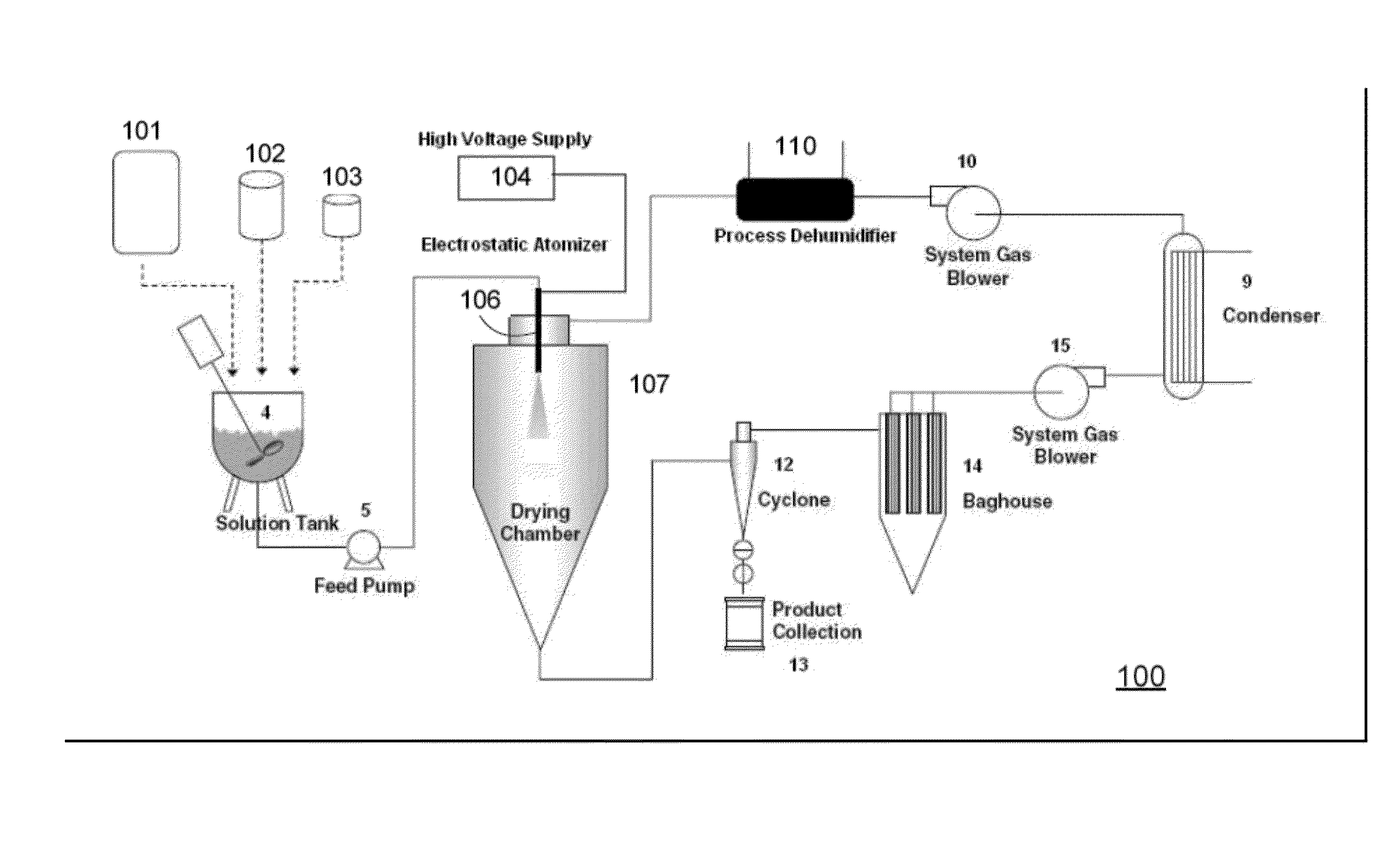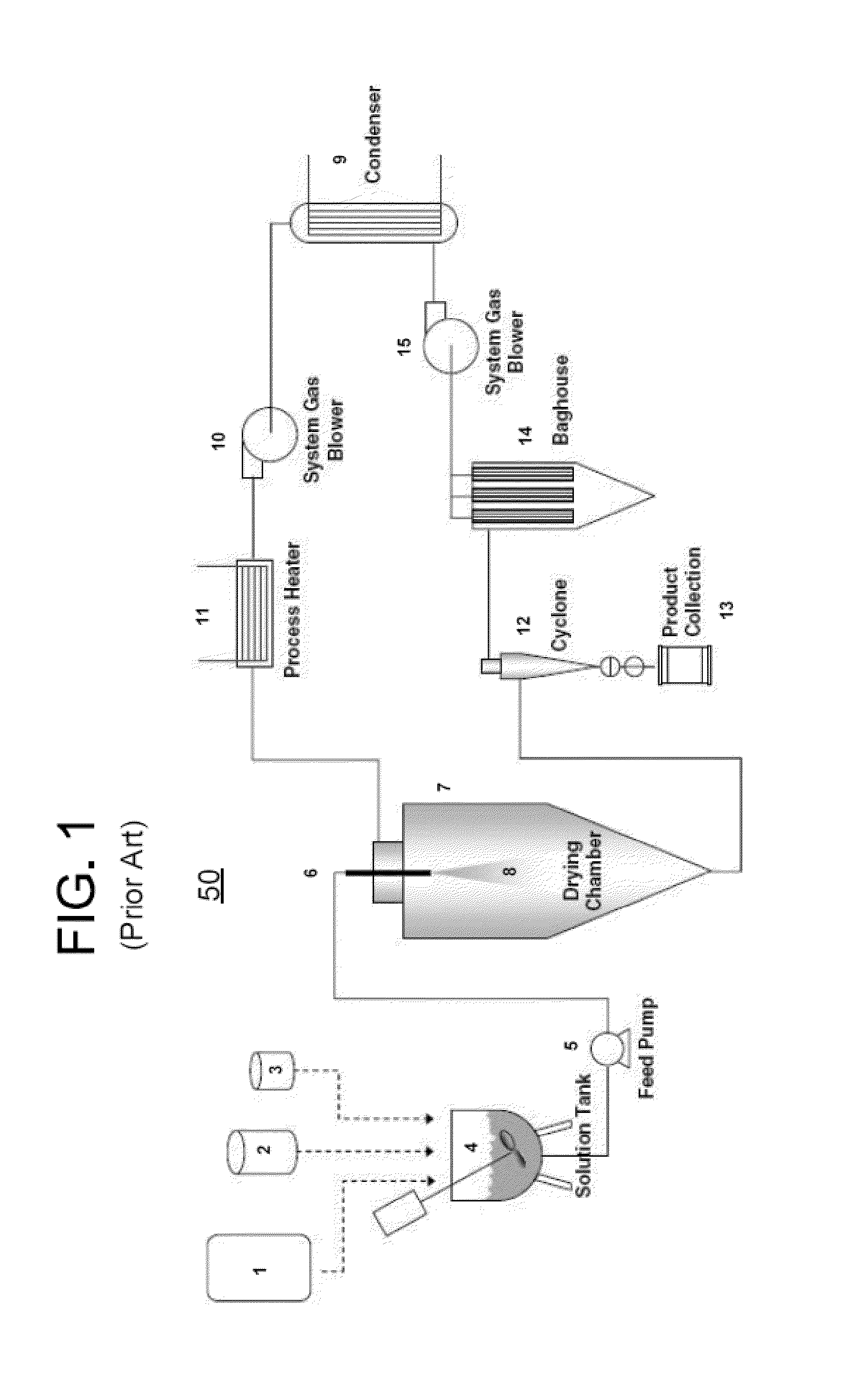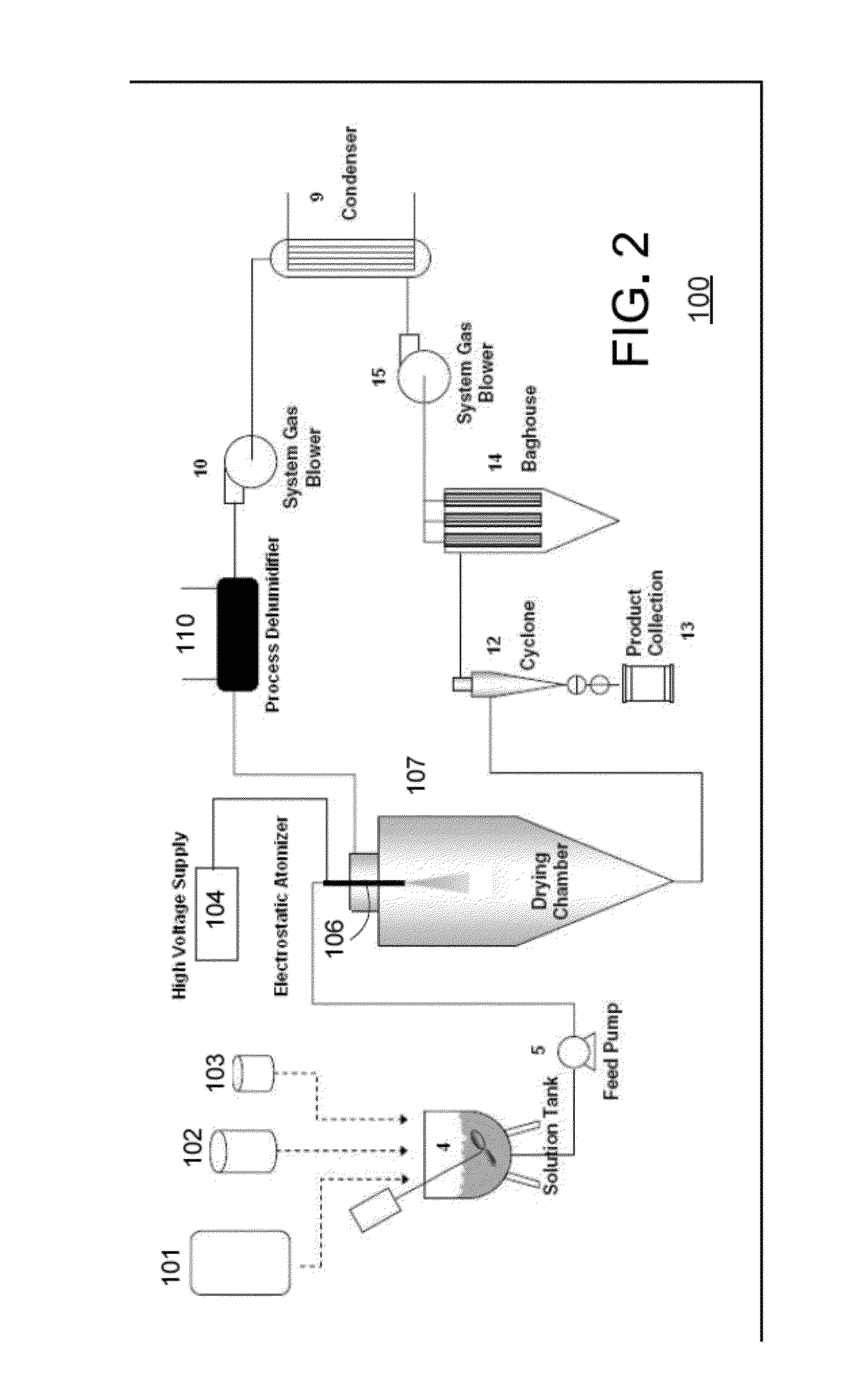Methods and apparatus for low heat spray drying
a technology of low heat spray and low temperature, applied in the direction of lighting and heating equipment, applications, furniture, etc., can solve the problems of significant loss of revenue, significant degradation of performance in commercial use, and degradation of active ingredient in powdered medicaments,
- Summary
- Abstract
- Description
- Claims
- Application Information
AI Technical Summary
Benefits of technology
Problems solved by technology
Method used
Image
Examples
example 1
[0084]D-limonene Assessment
[0085]In order to demonstrate some of the important advantages of the “no heat” spray dry process over traditional spray dry processing, flavor powders prepared by both methods were subjected to an accelerated aging test. The test powders were placed into an oven maintained at a temperature of 95° Fahrenheit. Once every seven days a sample of each powder was analyzed via gas chromatography mass spectrometry (GC-MS) analysis to determine the presence or absence of key molecular constituents. The flavor oil for analysis was extracted from the powder samples using standard procedures.
[0086]The results for both conventionally spray dried and no heat spray dried powders were also compared to a control sample of the starting neat flavor oil (“Neat Oil”) subjected to the same storage conditions as the powders. The test was run for a period of 9 weeks. This test simulates degradation processes that a powder will experience over its shelf life. The primary degradat...
example 2
[0092]Gamma-Terpinene Assessment
[0093]Gamma-terpinene is normally present in lemon and lime oils, and contributes to the top note of the flavor. When gamma-terpinene oxidizes the principal oxidation product is para-cymene (p-cymene). The concentration of gamma-terpinene as a function of time is shown in FIG. 13, for the control neat oil (“Neat Oil”), the traditional spray dried powder (Sample B, “Spray”) and the low temperature spray dried powder in accordance with present disclosure (Sample A, “Zoom”). FIG. 13 shows a comparison of the gamma-terpinene content as a function of time of exposure to hot air at a temperature of 95° F. There was a relatively fast decrease in gamma-terpinene concentration in the traditional spray dried powder within the first two weeks of testing. The control neat oil and Zoom dried powder showed a slight decrease over the 9 week period.
[0094]FIG. 14 is a comparison of para-cymene oxidation product for corresponding samples of the he control neat oil (“Ne...
example 3
[0095]Alpha / Gamma Terpineol Assessment
[0096]Terpineols are a small constituent of citrus oils, which contribute to heavier, less fresh tastes. It is well known that alpha and gamma terpineols can be produced from limonene. The increased presence of alpha and gamma terpineol indicate ongoing oxidation processes.
[0097]FIG. 15 shows the concentration of alpha and gamma terpineols as a function of time, for the control neat oil (“Neat Oil”), the traditional spray dried powder (Sample B, “Spray”) and the low temperature spray dried powder in accordance with present disclosure (Sample A, “Zoom”). FIG. 15 shows a comparison of the alpha and gamma terpineols content as a function of time of exposure to hot air at a temperature of 95° F. There was a large initial rise in the concentration of terpineols in the powder made by the traditional spray dry process. The concentration of terpineols in the Zoom dried powder and in the control neat oil sample remained constant over the course of the te...
PUM
| Property | Measurement | Unit |
|---|---|---|
| viscosity | aaaaa | aaaaa |
| temperature | aaaaa | aaaaa |
| viscosity | aaaaa | aaaaa |
Abstract
Description
Claims
Application Information
 Login to View More
Login to View More - R&D
- Intellectual Property
- Life Sciences
- Materials
- Tech Scout
- Unparalleled Data Quality
- Higher Quality Content
- 60% Fewer Hallucinations
Browse by: Latest US Patents, China's latest patents, Technical Efficacy Thesaurus, Application Domain, Technology Topic, Popular Technical Reports.
© 2025 PatSnap. All rights reserved.Legal|Privacy policy|Modern Slavery Act Transparency Statement|Sitemap|About US| Contact US: help@patsnap.com



